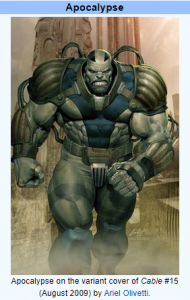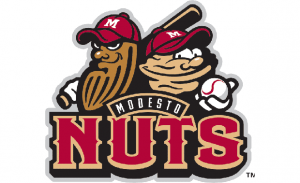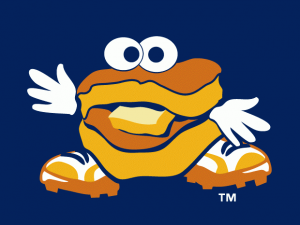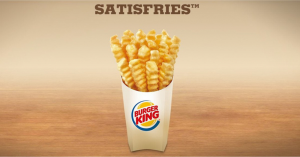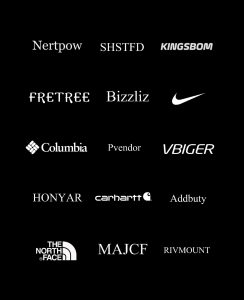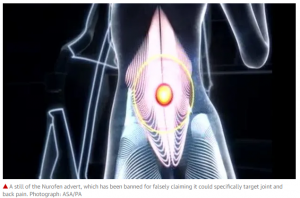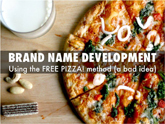Racist Branding?
Notice the juxtaposition of the Chiefs branding with the “End Racism” end zone printing. The irony in this image is stunning!
GABRIELLA TRUJILLO
In 2020 there has been a strong push for sports teams to change their branding if they are using a Native American name as a team mascot. Earlier this year the Washington Redskins changed to The Washington Football Team (I bet merchandise sales are not big for that moniker).
However, in a recent article on fivethirtyeight.com (https://fivethirtyeight.com/features/hundreds-of-schools-are-still-using-native-americans-as-team-mascots/) Hope Allchin notes that there are some sports teams that are fighting this trend.
Most states allow the use of Native American mascot names. Maine is the only state that banned it. A few years ago the NCAA adopted regulations indicating that teams with “hostile and abusive racial/ethnic/national origin mascots, nicknames or imagery” would be prevented from hosting NCAA championship events and required to use equipment that didn’t display that imagery in championship games. But there is a loophole. The NCAA allows Native American mascot names if the name is supported by a local Indigenous tribe. For example, because a single band of the Seminole tribe — the band that resides in Florida — supports the use of the Seminole mascot, Florida State University can continue its use of the Seminole mascot.
Another example of continued use of Native American mascots is those used by tribal high schools where students are primarily Native Americans. In this instance, Native American mascots serve as cultural identification rather than cultural appropriation. Around 2 percent of Native mascots are used at tribal high schools.
But there are still holdouts such as the Kansas City Chiefs. While the Chiefs have instituted several efforts to reduce the appearance of being racist (e.g., no face painting or wearing of feather headdresses), they are sticking to the Chiefs nickname.
The Washington Redskins were forced to change their name through a combination of political and economic pressure from local politicians, sponsors and advertisers. FedEx, who is the naming rights sponsor of the FedEx Field where The Washington Football Team plays, was a leader in getting ownership to make the change. Until the Chiefs organization receives similar economic pressure from advertisers and sponsors, they will not change. We will see how this plays out!
Hurricane Names
Today I learned that, after Hurricane Sally, the next named hurricane will be named Teddy. Hurricane Teddy? And to make matters worse, the two after that will be named Hurricane Vicky and Hurricane Wilfred. Here is the official list of hurricane names. https://geology.com/hurricanes/hurricane-names.shtml
With all due respect to people named Teddy, Vicky and Wilfred, I don’t think those are appropriate names for a hurricane. If Hurricane Teddy ends up being a destructive hurricane, the name itself will prevent people from taking it seriously. Who is going to evacuate in the face of Hurricane Teddy?
I think hurricanes should be named after supervillains. If you head that Hurricane Apocalypse (Apocalypse was a fictional supervillain appearing in comic books published by Marvel Comics) was heading your way, I bet you would take that threat seriously.
But Hurricane Teddy? Hurricane Wilfred? I bet you’d take your chances and try to ride it out.
Almond Milk. Where Do You Draw The Line?
Is almond milk really milk? It depends.
Ask anyone associated with the US Dairy Industry and the answer is a resounding NO. They’ve sued to stop names like almond milk, oat milk, or soy milk. They would prefer names like “oat drink,” “soy beverage,” and “almond-based dairy alternative.” Those names certainly do not sound appetizing to me!
Ask the producers of plant-based milks and their answer is YES.
The FDA actually has official “standards of identity” that require milk to be “the lacteal secretion, practically free from colostrum, obtained by the complete milking of one or more healthy cows.” However, the FDA refuses to enforce these regulations.
Where do you draw the line? Should fake meat products be allowed to call themselves meat? Should “vegan leather” be allowed to be called leather?
Where do you draw the line?
The Ham Fighters
Every year I do a blog post on the interesting names of minor league baseball teams. How can you not love team names such as the Modesto Nuts (the A League affiliate of the Colorado Rockies) or the Montgomery Biscuits (the AA affiliate of the Tampa Bay Rays)?
This year I expanded my search globally and discovered baseball team names in Japan.
And I found the Hokkaido Nippon Ham Fighters. The idea of hams fighting was very intriguing – I mean what would their team logo design be?

Copyright Emily Wallace (http://eewallace.com/about) from the article https://www.southernfoodways.org/ham-to-ham-combat-the-tale-of-two-smithfields/
But as I researched the name I discovered it was named after Nippon Ham, a major Japanese food processing company.
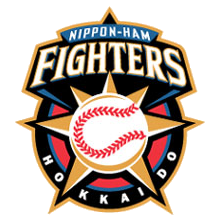
By Source, Fair use, https://en.wikipedia.org/w/index.php?curid=36847341
In Japan, professional baseball teams aren’t known by the city, as in the United States (e.g., New York Yankees). They carry the names of the companies that own them. So the official name is:
• Hokkaido – the northernmost of Japan’s main islands
• Nippon-Ham – the corporate owner
• Fighters – the team nickname
As an aside, the “Fighters” nickname came from a naming contest. A female high school student submitted the winning name, arguing that one of the team’s best players had guts and therefore was a “fighter.”
Other team names in the Nippon Professional Baseball league include:
• Tokyo Yakult Swallows – Yakult is a probiotic drink
• Fukuoka SoftBank Hawks – SoftBank is a telecommunications company
• Tohoku Rakuten Golden Eagles – Rakuten, Inc. is an online retailing company
If you want to see how baseball team names have evolved in Japan, check out this team name history project on Reddit: https://www.reddit.com/r/NPB/comments/4ffsa2/npb_team_name_history_project/
Could this naming format work in the US? Not really, as most Major League Baseball Teams in the US are owned by billionaires, not companies. Face it, the John Henry Red Sox or Hal Steinbrenner Yankees doesn’t have the same feeling as the Boston Red Sox or the New York Yankees.
BACD = Pay Attention To Me
I recently purchased some bar stools from Wayfair. As many of you know, much of the furniture sold on Wayfair requires assembly, and these bar stools were no exception. As a proficient assembler of IKEA furniture, I figured I could handle it.
I started out by taking everything out of the box, and reading the assembly instructions. There were 4 legs, two marked A and two marked B (all 4 legs looked to be identical). There were four side supports, two marked C and two marked D. The seat was marked E.
I assumed that the first step in the instructions would involve the legs marked A, but I was wrong. The first step said to mount the legs marked B into the base E. Why start with the legs marked B? Was this just a bad translation of foreign language instructions?
I’ll give the designers more credit than that. In fact, they may have been leveraging a type of cognitive bias. Face it, when things go as you expect them to go, you pay less attention. However, when the instructions start with Leg B instead of Leg A, you read the instructions more closely.
This bias is also useful in name development. Entrepreneurs love descriptive names. A food processor that does a fast job of chopping up food gets named “Fast Chop.” Entrepreneurs think this makes life easier because they do not have to spend money to advertise the benefits of their product…the name says it all!
In reality, “Fast Chop” gets lost in a sea of competitive products with similar names (“Quick Chop” or “Turbo Chop”). To stand out you need a name that is different and causes the consumer to stop and notice. In other words, you often need to put the assembly instructions in BACD order!
Here is a visual way to demonstrate the issue. In the three groups of circles shown below, the circle in the center is always the same size. However, as you can see, the center circle looks smaller or larger based upon the size of the other circles surrounding it. The group of circles on the right has six similarly sized circles, and you can see how it is impossible to distinguish one from another. If you want to stand out, it is far better to be the outlier, such as the center circle in the first two groups of circles.
Branding Fail or Marketing Fail?
In 2013, Burger King decided to take on McDonald’s famous French fries by launching a healthier alternative…Satisfries®. The Burger King fries were cooked in a less porous batter which resulted in less oil absorbed. This enabled Burger King to claim that Satisfries were healthier because they contained 40% less fat and 30% less calories than traditional french fries.
Satisfies were more expensive than regular french fries, costing $1.89 per serving versus $1.59. Yes, it is customary for healthier items to cost more than regular items, so perhaps the higher price was expected.
Nevertheless, the product failed and was gone in less than a year. What went wrong? Was this a branding fail or a marketing fail?
As a branding expert, I first look to the name. Is Satisfries a good name or a bad name? Personally, I like the name because it combines the idea of satisfies and fries, and for me French fries are very satisfying! If the product actually delivered on a more satisfying taste, then perhaps it would have been a good name.
But from a marketing perspective, I am not sure that the name makes sense for this product. The product had a “healthier” positioning, and taste was not the focus. Pricing, while consistent for healthier items, was nearly 20% higher.
My conclusion is Satisfries is a good name in search of a good product. Apparently, Burger King agrees as they have maintained the Satisfries trademark. Maybe someday we will get French fries that live up to the name Satisfries!
Are Pseudo-Brands Really Brands?
One of these things is not like the other. Actually, quite a few of them are very different. But all of them claim to be “brands.” I know this because they are names of various things being sold on Amazon and yes, these names are registered in the US Trademark Office.
Illustration by The New York Times
But are they really “brands?”
Welcome to the world of “Pseudo-Brands.” You see, Amazon likes products that are branded. And some manufacturers do not want to put any effort into developing a brand name that has meaning. This is how you end up with a name like MAJCF for winter gloves. The manufacturer needs to get a name through the US Trademark Office and the easiest way to do that is to make the name non-sensical (so there are no potential trademark conflicts).
A recent New York Times article exposed this new wave of “branding.” Here is the article:
https://www.nytimes.com/2020/02/11/style/amazon-trademark-copyright.html
Of course, as a professional name developer, this is an affront to my core beliefs. Yes, there is extra effort in developing a great brand name that communicates meaning, and yes getting it through the US Trademark Office is often difficult. If it were easy nobody would hire me! But I can assure you, developing a real brand name is always worth it!
Pseudo-Brands only confuse. Real brands matter! Invest in your future and develop a real brand!
Brandless Is Dead – Long Live Brands!
About two and a half years ago, Brandless was launched. The company sold “unbranded” household, personal care, baby, and pet products on the cheap and was viewed as a breakthrough in the “anti-branding” movement.
[Photo: John Sciulli/Getty Images for Brandless]
At the time it launched, I got a lot of flack from “anti-branders” who claimed that Brandless would be the downfall of traditional brands. Who needs to pay the middleman and the marketer in order to buy decent products? Who needs to invest in a brand name?
Allow me to repeat what I said back then: “BRANDS MATTER.”
The Brandless website attributes the failure to the crowded e-commerce market: “While the Brandless team set a new bar for the types of products consumers deserve and at prices they expect, the fiercely competitive direct-to-consumer market has proven unsustainable for our current business model.”
Allow me to rephrase this. Brandless failed to demonstrate proper value to consumers of their products. This is what a good brand can help do, but Brandless failed to establish itself as a quality brand that was worth trusting.
The irony is Brandless was actually a good brand name and a good business concept. However, they failed to recognize (or admit to) the power of the brand. The external validation of the concept is being delivered by competitors such as Public Goods who is doing a much better job of building a brand.
I’ll say it again…BRANDS MATTER!
Branding The Placebo Effect
For many years I’ve admired the positioning work behind the Nurofen brand of painkiller. They positioned the product as “targeted relief from pain” and had a wonderful demo that visually demonstrated how the product could target specific areas of pain.
Reckitt Benckiser had several products that addressed specific pain areas, including Nurofen Back Pain, Nurofen Period Pain, Nurofen Migraine Pain and Nurofen Tension Headache. Brilliant marketing…although it was not quite truthful.
You see, all the products contained exactly the same active ingredient in the exact same dosage. In fact, all that was different was a different package and label. And the active ingredient does not fly around and locate itself where the pain is…it works throughout the body.
The Australian Competition and Consumer Commission brought down the house of cards and levied a $6 million fine because the company “had profited substantially from misleading customers.”
Legally this was the right thing to do. But from a drug effectiveness standpoint, it probably was wrong. You see, the placebo effect in drugs is very high. Placebos cannot lower your cholesterol, but they can alter your perception of pain. For example, studies have shown that red pills relieve pain better than any other color. Imagine what the very specific positioning of these Nurofen products could do. Even with the same active ingredient and dose, the placebo effect ensures that your period pain would be better relieved by a specific product like Nurofen Period Pain rather than a generic ibuprofen.
I’m not suggesting that misleading consumers is a good idea. Rather, I’m acknowledging that the placebo effect exists and it can be used to imply effectiveness via very specific brand names (just please make something different in the product…not just a label!).
“That which we call a rose by any other name would smell as sweet.” William Shakespeare
Have you eaten Patagonian toothfish? Ewww, right? Well, if you have eaten Chilean sea bass you have eaten Patagonian toothfish. An American fish wholesaler changed the name to make it more palatable, even though the toothfish is not related to bass and most of the fish labeled as Chilean sea bass does not come from Chile!
There is a long history of rebranding fish to make it more palatable. Here are a few more examples:
Orange roughy was originally slimehead.
Monkfish was originally goosefish.
Sea urchin (Uni on your favorite sushi restaurant’s menu) was originally whore’s eggs.
Peekytoe crab was originally mud crab.
Fish wholesalers are not the only ones who change names to change perceptions. The drug industry has been doing this for years. Urinary incontinence became “light bladder leakage.” Impotence became erectile disfunction. Changing a name changes the perceptions of the disease.
Do you have something you need to rename? We can help!


